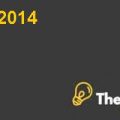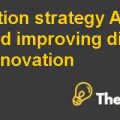
FIRST CITY NATIONAL BANK CASE: Read the case and answer the following questions.
You are assigned the task of deciding how many tellers to employ for the 11:30-12:00 slot on a normal day.
Assume that the cost of using a teller for an hour is $50.
It is clear that customers are not happy to wait – in order to quantify economically the pain of waiting, you have been asked to value a customer’s time also at the rate of $50 per hour – that is, if a customer waits for 6 minutes (0.1 hours) in the queue (not including the service time), this waiting time is equivalent to the customer incurring a cost of $5.
Also, assume that the single line teller arrangement of Exhibit 1 is used so that it is appropriate to use the mms.xls spreadsheet. Use the spreadsheet mms.xls to find the optimal number of tellers to employ for this half an hour slot – your objective is to minimize the total cost of hiring some number of tellers plus the total expected waiting time costs for the customers.
What is the utilization when this number of tellers is used?
Hints:
1. The spreadsheet requires 3 inputs, an arrival rate, a service rate and the number of servers. The first two inputs should be gathered from the data. The number of servers is our decision which you can vary.
2. The service rate and arrival rate should both be expressed in the same units, for example customers per hour or customers per half-hour. If you choose to express them in customers per hour, then the expected waiting time that you see on the spreadsheet is the expected waiting time in hours.
If you choose to express them in customers per half-hour, then the expected waiting time that you see on the spreadsheet is the expected waiting time in half-hours (for example, if the spreadsheet says the expected waiting time is 2.2, then, it means that the expected waiting time is 1.1 hours in this case).
3. The average service time is given in the case. The service rate is the reciprocal of this.
4. The average arrival rate given in Exhibit 4 is the average arrival rate in customers per half-hour.
NO. OF TELLERS TO BE EMPLOYED, % OF UTILIZATION
The average arrival time is taken from exhibit-4 within the case which is 111seconds as there are 4548 customers arriving during the half hour between 11:30 to 12, it takes 45 seconds for a teller to cater the needs of the customers and a teller is paid $50 per hour whereas value is also given to customer waiting which is valued as $50 per hour for the time waited by the customer in the line.
If the bank hires 4 tellers to account for this time it will cost the bank $100 for that half hour this will have a utilization of 60%, which is low compared to the banks' standards but this will ensure that the probability of the customer waiting is 0.3 whereas if 3 tellers are hired then the utilization is up at 80% but the probability of customer waiting is raised up to 0.68.
With the probability of only 0.3 it can be expected that 1400 customers would wait, but it is expected that they would wait for only 0.0045 seconds, making the total waiting of 6minitues leading to a cost of $5 only, making the total cost of $105.
But if the bank wishes to maintain its efficiency, then it would hire 3 tellers raising the probability of people waiting to 0.68 means 3100 customers can be expected to be waiting with expected waiting time in queue of 0.0285 leading to a total weighting of 88minutes which would be a cost of $73, the total cost would be about $148.
This clearly indicates the bank should have 4 tellers to cater the walk in customers during the time of half hour between 11:30 to 12:00 as it is most cost efficient decisions.
| M/M/s | ||||||||||
| Arrival rate |
111 |
Assumes Poisson process for | ||||||||
| Service rate |
45 |
Arrivals and services. | ||||||||
| Number of servers |
4 |
|||||||||
| Utilization |
61.67% |
|||||||||
| P(0), probability that the system is empty |
0.0767 |
|||||||||
| Lq, expected queue length |
0.4966 |
|||||||||
| L, expected number in system |
2.9633 |
|||||||||
| Wq, expected time in queue |
0.0045 |
|||||||||
| W, expected total time in system |
0.0267 |
|||||||||
| Probability that a customer waits |
0.3087 |
|||||||||
|
|
||||||||||
| $/HOUR | ||||||||||
| COST OF TELLER | 50 | |||||||||
....................
This is just a sample partial case solution. Please place the order on the website to order your own originally done case solution.
First National Bank Corp, a large regional bank in the north-east, have to decide how big a reserve for credit losses to increase in the 1990 financial statements. The decline in New England caused serious problems in the loan portfolio. "Hide
by Mary E. Burt, Charles A. Nichols Source: Harvard Business School 21 pages. Publication Date: September 26, 1991. Prod. # Hundred ninety-two thousand and forty-two-PDF-ENG












